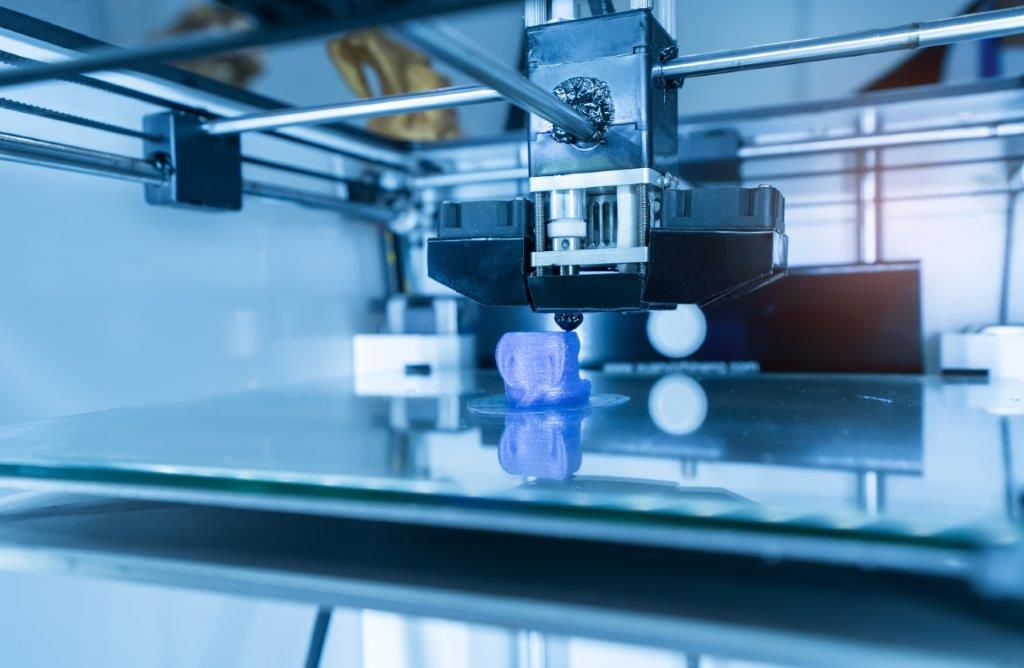Prototyping - IDP Process® Phase Three
- Rapid Prototyping Capabilities
- 3D Printing Capabilities for Prototyping
- Sanner Flexible Change Mold System for Prototypes
- BabyPlast & Sanner Flexible Change Mold System for Prototypes
- Prototyping Simulations
Rapid Prototyping Capabilities
Prototyping is performed early in the development process as it can be used to conduct early testing, optimize tooling concepts, and begin manufacturing process design which can in turn impact the functionality and design of the end product. Feasibility should be challenged early in the concepting stage and when elaborating on the initial CAD designs, by considering all design requirements. Our Design for Manufacturing and Assembly approach derisks the development process by assessing the full process including device material selection, tool layout, injection molding, automation, and assembly at the beginning of the process. We can facilitate a range of testing using production-like prototypes faster, by selecting the right prototyping method. With Sanner, selecting the most appropriate prototyping approach can also accelerate the development process, reduce costly rework, and provide learning for the rest of the IDP Process®.
3D Printing Capabilities for Prototyping
Sanner’s 3D printing capabilities provide tangible prototype models that can give the customer a realistic first impression of the device that can be tested for function, fit and device dimensions. Our 3D printing options include Fused Filament Fabrication (FFF) and stereolithography (SLA) printing technologies. FFF 3D printing is better suited to printing larger components, as the 0.4mm and 0.6mm nozzle diameters limit the details the printer can reproduce. Sanner uses FFF 3D printing for a variety of prototyping applications, such as jigs, fixtures and large parts or prototypes, as they can be produced rapidly at lower cost than other additive printing methods.
SLA 3D printing at Sanner can achieve more detailed prototypes. SLA 3D printed components can be made from materials with biocompatibility and mechanical properties that are directly comparable to devices intended for the production stage, even for biomedical applications. Having the ability to rapidly create 3D printed prototypes with similar optical and tactile properties can accelerate later steps in the development process for both manufacturing process and assembly.
Successful 3D printed prototypes can result in the preparation of aluminum-based tooling used for production of samples for clinical studies and advanced testing. Sanner’s engineers have the knowledge and expertise to apply the right 3D printing technology to advance CDMO customer projects to the next stage of development.
Sanner Flexible Change Mold System for Prototypes
Sanner’s Flexible Change Mold System is designed to produce complex components by injection molding with the benefit of 3D printed tool inserts all controlled in-house, enhancing the speed of the process. Using standardized master molds to create components, provides Sanner with the flexibility to generate different injection molded part sizes faster and in the same material used for qualification. These prototypes can have near production-intent properties , providing a more accurate and reliable device test result or design verification/validation than would be achievable with 3D printed components. Sanner’s Flexible Change Mold System can minimize later tool optimizations during industrialization and series production phases.
BabyPlast & Sanner Flexible Change Mold System for Prototypes
By utilizing the Babyplast injection molding machine in conjunction with Sanner’s Flexible Change Mold System allows Sanner to produce low-cost injection molded parts, even by 2K and 3K injection molding processes at small scale. Further advantage can be gained by combining 3D printed tool inserts, providing mold size flexibility that produces prototypes that will be close to the final product. 3D printed tool inserts are very close to series tooling results and all of the in-house experience gained through their production is maintained with the product, even through later series tooling production at Sanner. Sanner’s Flexible Change Mold System with Babyplast injection molding provide significant advantages over traditional steel or aluminum tools including cost, and speed. Sanner’s prototyping capabilities are always applied with the industrialized product in mind. Sanner’s technical experts can choose the best prototyping approach for each individual situation, optimizing costs and timelines for CDMO customers in support of HFE, functional testing, and clinical device needs.
Prototyping Simulations
Injection molding simulation software is an essential part of Sanner’s prototyping development toolbox that is used to obtain production-like component performance during prototyping. Optimizing prototyping molds at the earliest stages, before the production of tools, can provide significant development efficiencies. Simulations can show when cavity fills are not in balance so adjustments can be made early, thus reducing costly tool corrections. Simulations can also virtually test materials and alternative part designs before any tooling is ever built, saving CDMO customers time, money, and materials. Computer driven simulations can also be used to detect and correct issues, such as air pockets, weld lines, shrinkage, or warping, more quickly. Overall, simulations at Sanner help to solve prototype challenges before they become costly problems. When Sanner applies its simulation experience to prototyping development steps, it can result in lower error rates and more efficient tool qualification. Sanner applies computer simulation technologies at the earliest stages of development including prototyping to accelerate the overall development process on the path to industrialization and serial production.
Sanner Prototyping
Sanner has been serving drug delivery, diagnostics, and medtech customers for over two decades with production processes and quality systems that are fully adapted to the requirements of the pharmaceutical and medical device industries. We use our ISO Class 7 or 8 cleanrooms as well as unclassified spaces for molding activities, depending on the individual requirements, all operated under an ISO 13485 quality management system (QMS).
